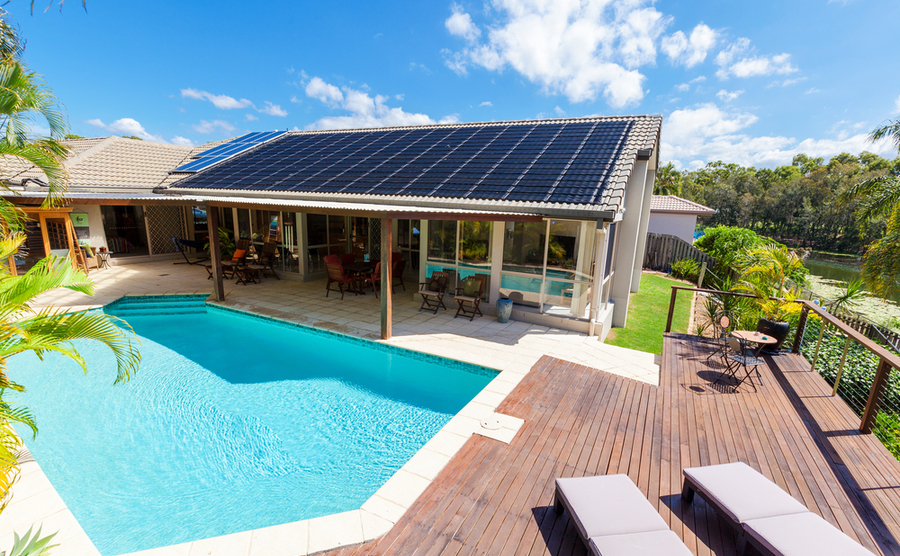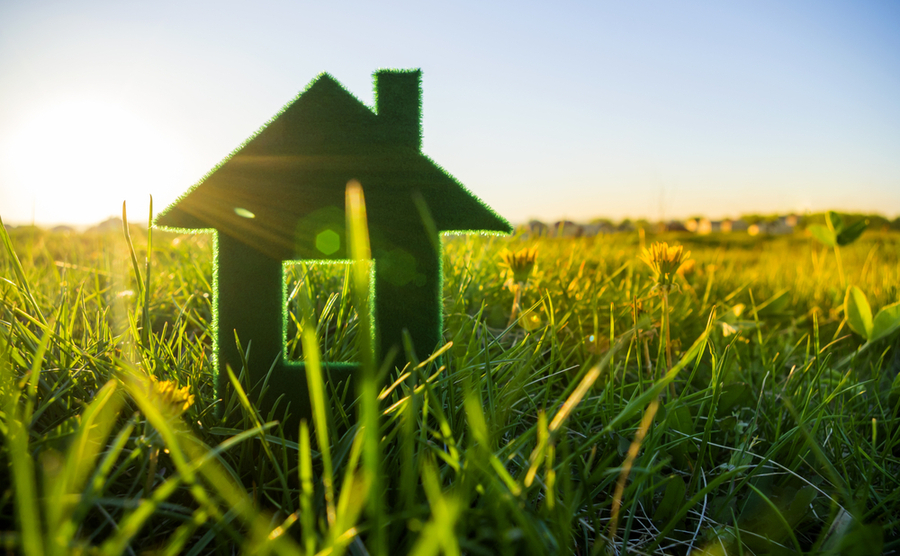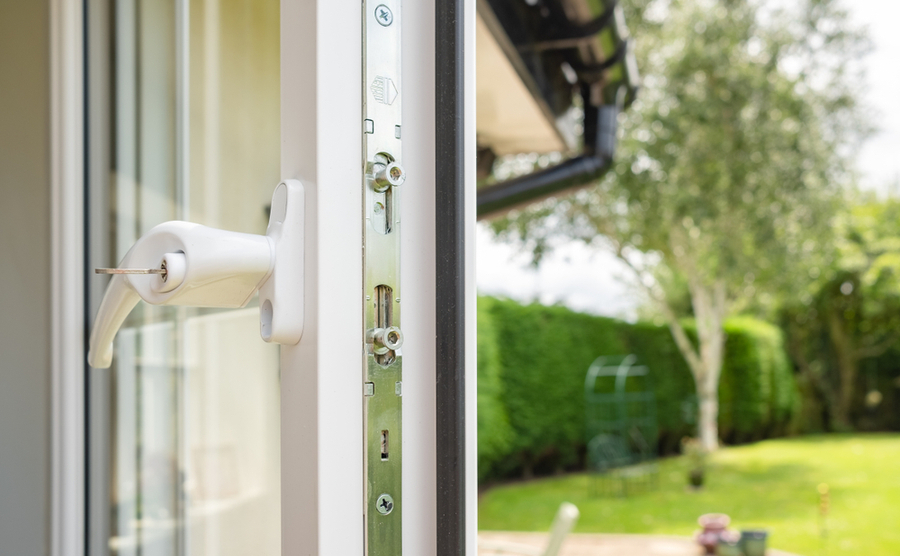The recent COP26 summit highlighted just how urgently we need our homes to be carbon zero, and not just in the UK but across the globe. Here’s a guide to what this means when house-hunting abroad and how you can keep your carbon footprint to a minimum…
The message from the top is clear: energy efficiency now must be a key consideration for anyone buying a property, whether it’s somewhere to live or a holiday home.
Wherever you choose to buy, learning a few negotiating tips could get you more house for your money. Download our free How to Negotiate Abroad guide. It’s written by a licensed estate agent and is packed with insider tips.
There were lots of important takeaways from COP26 in Glasgow, but one that stood out says that so-called eco-homes must no longer be just ‘nice to have’ showpieces. As from yesterday, zero carbon homes need to be the norm and taken seriously not only by homeowners but investors, developers and lenders too.
It’s a no-brainer that there is so much focus on property and construction. Buildings are responsible for 40% of energy consumption and 36% of carbon dioxide emissions in the EU. According to the Climate Change Committee, in the UK these figures are 59% and 23% respectively.
Part of the UK Government’s answer to the crisis is its recent Heat and Buildings Strategy, which presents heat pumps as a solution to reducing carbon emissions. Rightly or wrongly, they have pledged to install 600,000 heat pumps per year by 2028. Insulation is also a priority, with the Committee on Climate Change pointing out that insulation rates are currently around a third of what they need to be to cut energy consumption.
New property is being prioritised, with banks and major lenders getting behind the green agenda. Aviva Investors, for example, is making £1 billion available over the next four years to lend for sustainable real estate. Globally, more than $700 billion of sustainable and green debt was issued in 2020.

Solar energy is widespread in sunny Mediterranean countries
Elsewhere, according to EU legislation since the beginning of 2021 all new-builds in Europe must be ‘nearly zero-energy’ buildings (nZEBs). Like in the UK, in the EU it is mandatory for properties being sold or let to have an Energy Performance Certificate (EPC).
“A good energy performance rating is a win on all fronts,” said Marc Pritchard, Sales and Marketing Director of Spanish developer Taylor Wimpey España, recently.
“It shows that the property’s environmental impact will be minimal in terms of its energy consumption, and it reassures owners in terms of their bills. It’s something that we focus on very carefully for each of the developments that we design and build.”
So if you’re ready to buy a property abroad, what things should you be thinking about?
The carbon jargon…
Zero carbon, zero energy, net zero, energy efficient, sustainable, eco-friendly… Feeling bombarded and slightly confused by all the terminology?
Largely interchangeable, they are all used to describe homes that are geared towards reducing carbon emissions. Typically, they produce their own clean, sustainable energy so have low or, ideally, non-existent levels of carbon emissions.

The ultimate standard to reach is zero carbon or zero energy
Conventional houses contribute to carbon emissions primarily by using electricity, via a supplier, that is powered by combustible fossil fuels and using combustion appliances, ie gas or oil fired boilers. The way properties are built can also contribute to emissions, as does burning coal or wood within the home. It is difficult for older or existing properties to eliminate carbon emissions entirely, so the aim to bring levels down as much as possible.
The ultimate standard to reach is zero carbon or zero energy – these properties run entirely on renewable energy and register no carbon emissions at all. That said, it is possible for a property to be carbon negative, which means it produces more renewable energy than it consumes. Meanwhile, net-zero (also carbon neutral) properties contribute to carbon emissions but off-set this through technology or other means, such as planting trees.
The key benefits
Most of us purchase an overseas property for lifestyle reasons, whether that’s to enjoy a new life or have somewhere to visit for holidays. Buying a property that’s sustainable and causing little or no harm to the environment will only enhance the sense of enjoyment you get from your new home.
Buying together with family is a great way to double, triple or quadruple your budget, and to have somewhere everyone can enjoy. Find out how joint ownership works in our free Buying with Family Guide.
Besides contributing towards the greater good by helping to cut carbon emissions, sustainable homes are efficient to run and come with financial benefits. Most obviously, they come with cheaper running costs, or in some cases no bills at all. Increasingly in Europe, there are government incentives too, which could be a grant towards installing sustainable appliances or upgrading an existing property. In some countries, including Spain, low carbon properties now attract lower rates of council tax. Owners should also benefit from long-term capital gains – a low carbon house will be worth more than a high carbon house, especially with demand increasing.
Meanwhile, the wellbeing benefits are often overlooked. Energy efficient homes are designed to maximise solar energy and natural light, to encourage air circulation, and be better insulated, both thermally and acoustically. Natural products are frequently used in their construction. All of these things together help to improve the overall comfort and quality of life on offer to the occupants.
Common solutions
So what devices or solutions are used to lower carbon emissions most frequently in overseas properties?
Most properties remain on-grid, so connected to a electricity supplier and mains water. This allows them to use renewable sources as much as possible, without relying 100 per cent on them. Properties that are completely off-grid usually have a back-up generator for power.

Insulation is another staple for today’s sustainable homes – Nick Beer / Shutterstock.com
Solar energy is widespread in sunny Mediterranean countries and is harvested in two ways. Firstly, there is solar-generated hot water for use in the kitchen, bathroom, heating, even swimming pool. While photovoltaic panels are used for generating electricity for your home.
Alternative sources of renewable energy include wind turbines for power and heat pumps (air or ground) for heating and hot water.
Insulation is another staple for today’s sustainable homes, designed to stop heat loss in the cooler months and keep heat out in the summer. This includes efficiently insulated walls and glazing in windows and doors.
Meanwhile, rural properties often have their own water source, either a spring or borehole. While anyone can take advantage of rainwater harvesting and the reuse of wastewater to reduce do their towards cutting consumption as well as their monthly bills!

